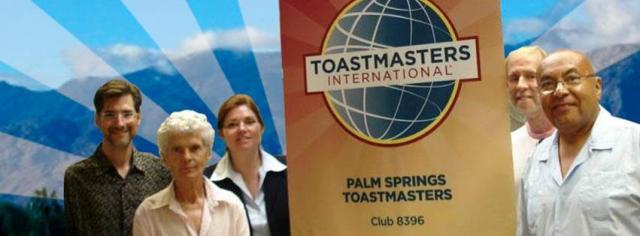May 19, 2012
[This blog is a continuing exploration of the public relations efforts, particularly via social media, of Palm Springs Toastmasters. It aims to be a discussion about what to do, and what to avoid. We hope that it will serve as a tutorial for anyone contemplating public relations on behalf of a local organization such as our club.]
At the beginning of the last post, I posed three questions regarding our relative social media quiescence: 1) Does it matter? 2) Why has this occurred? 3) How might it be prevented? I only considered the first of the three.
In summary, our social media presence does indeed make a positive difference for our club, but not necessarily in all the ways I had hoped. Our lighter activity of late has not resulted in significant loss, but a prolonged social media absence would.
The reasons for our relative inactivity still pertain. They should be considered. And if our club’s social media presence is to be maintained, they should be addressed.
Oddly, our social media activity has been very lonely.
Most of our club members are apathetic toward social media, and some are wary or hostile. As a result, this labor is mostly unseen, unrecognized, and unappreciated by the club in general. My aims for greater community and learning within our organization have been frustrated.
(I actually hesitate to publish this post. One of our members thought an opinion similar to the one above denigrated our club members, and insisted that I remove it.)
Our attempts at outreach to members of the local community have not garnered much interaction, and there’s no evidence that it has been effective in inviting visitors to our meetings. This relative paucity of conversation does not mean it has failed, though; just that it is not as social nor yielded the precise results I had anticipated.
[This post does not address the benefits of social media, real as they are. Rather, it considers the problem of maintaining social media activity.]
When a person makes a statement or asks a question and gets no response, that person will feel that he is being ignored. This is discouraging, and will probably lead to a diminution of effort. (I hasten to add that the response to my work has not been totally lacking, but from within our club and our local community, it has seemed very slight.)
So, measures to avoid lapses in social media activity include interaction, recognition, and positive results. When these are at low levels, activity will wane. The converse is true: interaction, recognition, and positive results will encourage social media activity.
As alluded above and described in previous posts, our social media activity has been a boon to our club. Putting it aside would be a loss. But if it is to continue, an infusion of interaction, recognition and positive results is called for.
It may be that Twitter is not a good platform for these. I’ve been told that, within our local community and among Toastmasters, Facebook is more commonly used. (I have an aversion to Facebook, and do not pursue it. This is a personal preference, and no judgment on Facebook.) Diversifying platforms would probably help.
It is said that it is hard for people to develop relationships with an organization; that it is easier for people to relate and interact with a person. This is probably true. Changing our Twitter account avatar from the logo to a picture of the person tweeting might well be very helpful.
Thirdly, acceptance of social media will increase with time. Mark Twain declined offers to buy stock in Bell’s new-fangled telephone because he was convinced its use would be relegated to a tiny elite minority. He was wrong. In time, social media presence will, like the telephone, be expected. But not yet.
These experiments in social media have been part of my (self-defined) duties as VPPR of our club. As with all Toastmasters activity, it has been a great learning experience. My term of office will soon expire. My interest in social media on behalf of our club is equaled by observing how the foundation I have laid will be used by my successor.
Statistics
- Tweets: 1,671
- Followers: 424
- Following: 675
- Google search for Palm Springs Toastmasters: positions #1, 2, 3, 4, 5, 6, 9, 11, 14, 18
- Google search for Palm Springs Public Speaking: #1, 13
- Bing search for Palm Springs Toastmasters: #1, 2, 4, 5, 7, 8, 11, 12
- Bing search for Palm Springs Public Speaking: #5, 6
- Yahoo Search for Palm Springs Toastmasters: #2, 4, 5, 7, 8, 9
- Yahoo Search for Palm Springs Public Speaking: #6, 9

